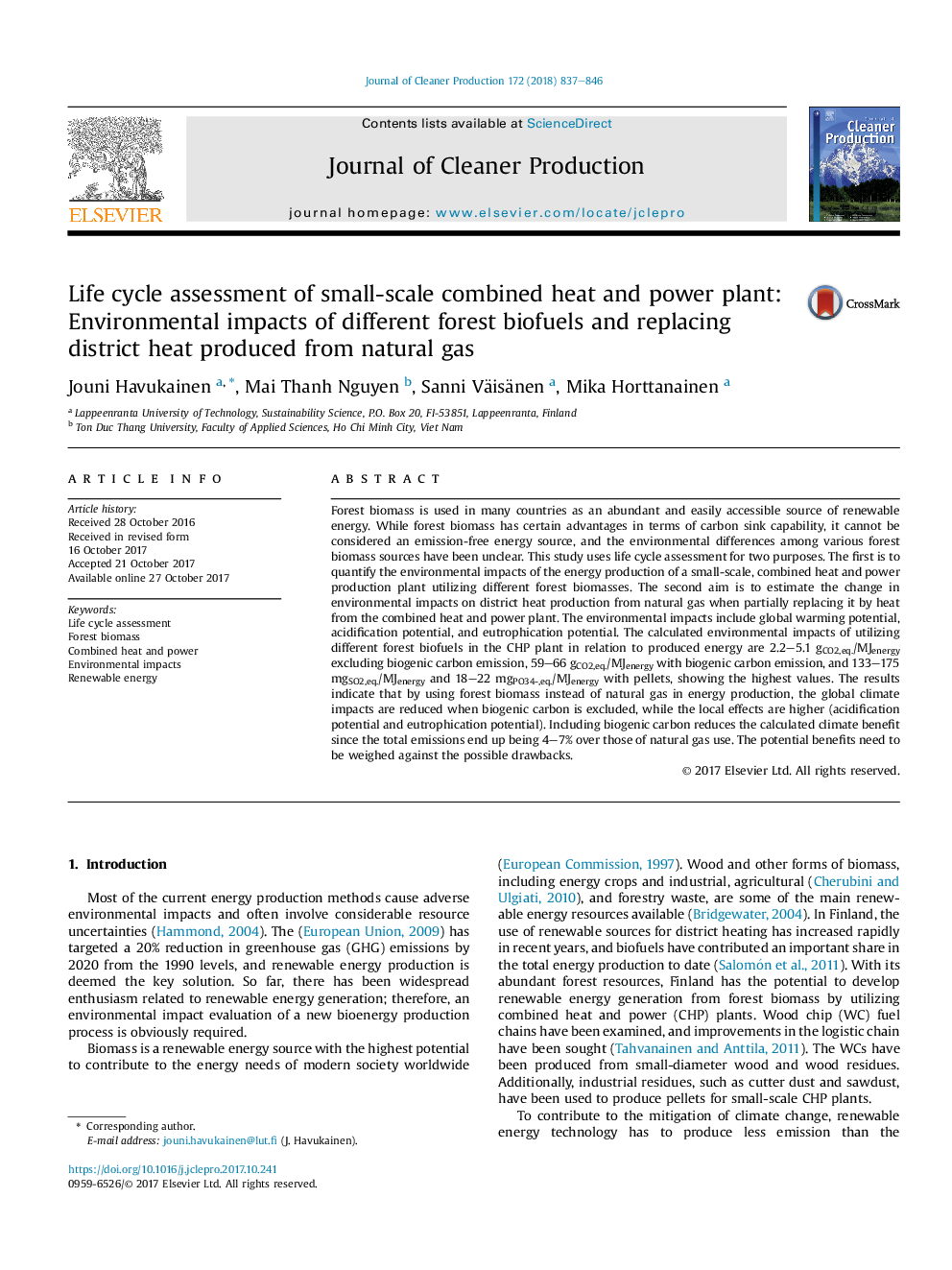| کد مقاله | کد نشریه | سال انتشار | مقاله انگلیسی | نسخه تمام متن |
|---|---|---|---|---|
| 8100070 | 1522081 | 2018 | 10 صفحه PDF | دانلود رایگان |
عنوان انگلیسی مقاله ISI
Life cycle assessment of small-scale combined heat and power plant: Environmental impacts of different forest biofuels and replacing district heat produced from natural gas
ترجمه فارسی عنوان
ارزیابی چرخه حیات کمپنی گرما و نیروگاه کم مصرف: تاثیرات زیست محیطی سوخت های زیستی مختلف و جایگزینی حرارت منطقه از گاز طبیعی
دانلود مقاله + سفارش ترجمه
دانلود مقاله ISI انگلیسی
رایگان برای ایرانیان
کلمات کلیدی
ارزیابی چرخه حیات، زیست توده جنگل، ترکیب گرما و قدرت، اثرات زیست محیطی، انرژی تجدید پذیر،
موضوعات مرتبط
مهندسی و علوم پایه
مهندسی انرژی
انرژی های تجدید پذیر، توسعه پایدار و محیط زیست
چکیده انگلیسی
Forest biomass is used in many countries as an abundant and easily accessible source of renewable energy. While forest biomass has certain advantages in terms of carbon sink capability, it cannot be considered an emission-free energy source, and the environmental differences among various forest biomass sources have been unclear. This study uses life cycle assessment for two purposes. The first is to quantify the environmental impacts of the energy production of a small-scale, combined heat and power production plant utilizing different forest biomasses. The second aim is to estimate the change in environmental impacts on district heat production from natural gas when partially replacing it by heat from the combined heat and power plant. The environmental impacts include global warming potential, acidification potential, and eutrophication potential. The calculated environmental impacts of utilizing different forest biofuels in the CHP plant in relation to produced energy are 2.2-5.1 gCO2,eq./MJenergy excluding biogenic carbon emission, 59-66 gCO2,eq./MJenergy with biogenic carbon emission, and 133-175 mgSO2,eq./MJenergy and 18-22 mgPO34-,eq./MJenergy with pellets, showing the highest values. The results indicate that by using forest biomass instead of natural gas in energy production, the global climate impacts are reduced when biogenic carbon is excluded, while the local effects are higher (acidification potential and eutrophication potential). Including biogenic carbon reduces the calculated climate benefit since the total emissions end up being 4-7% over those of natural gas use. The potential benefits need to be weighed against the possible drawbacks.
ناشر
Database: Elsevier - ScienceDirect (ساینس دایرکت)
Journal: Journal of Cleaner Production - Volume 172, 20 January 2018, Pages 837-846
Journal: Journal of Cleaner Production - Volume 172, 20 January 2018, Pages 837-846
نویسندگان
Jouni Havukainen, Mai Thanh Nguyen, Sanni Väisänen, Mika Horttanainen,
